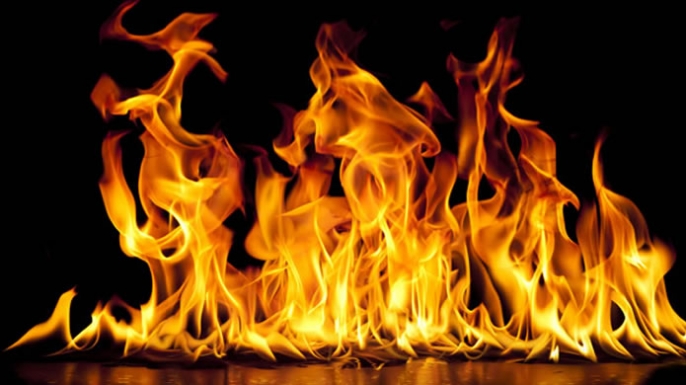Salam (May God Bless You). Chemicals are associated with energy more closely than what you might think. Chemical reaction starts off due to energy on the first place. As the reaction undergoes chemical changes, energy is taken in or given off depending upon the type of reaction whether exothermic or endothermic.
Activation energy
A small amount of energy is required to start off a chemical reaction, even if the chemical reaction results in giving off or taking in a lot of energy like an explosion. This amount of energy is called activation energy. It is denoted by Ea .
.
Enthalpy
Enthalpy is the amount of internal energy involved in a system of imput, processes and output. It mainly revolves around the internal energy of the reactents and the products. The change in enthalpy is  denoted by ΔH. Enthalpy is always negative in case of an exothermic reaction because energy is given off as heat energy and will always be positive in case of an endothermic reaction because energy is always taken in from the surroundings as heat energy.
denoted by ΔH. Enthalpy is always negative in case of an exothermic reaction because energy is given off as heat energy and will always be positive in case of an endothermic reaction because energy is always taken in from the surroundings as heat energy.
Combustion
Combustion is an exothermic process. Combustion is the type of chemical reaction used to release heat and light energy. The fuel for combustion is most commonly the fossil fuels. The fossil fuels are a result of the organic life being trapped under sediment and due to the decaying of the organic life, carbon and hydrocarbons were stored in the rocks. Coal is only carbon, meaning when it burns, it will combine with the oxygen in air to form carbon dioxide, CO2: C2(g) + 2O2(g) → CO2(g). Crude oil and natural gas are mainly hydrocarbons. Crude oil however has other elemants such as nitrogen, sulfur, and other metal carbonates.
Hydrogen as a fuel
Hydrogen is a flammable gas. It provides a lot of energy per gram. It is a very useful source of energy, this isnot only because it provides large amount of energy but also because it does not pollute the environment. When burned it produces water vapour: 2H2 (g)+ O2(g) → H2O(g). The oxygen is already present in the air. Hydrogen is also a very reliable source of energy because it is in vast amounts in the form H2O, water, since Earth is 71% water. Other than that when burned it again turns into water, making it reusable. Hydrogen can be obtained by either decaying of hydrocarbon or by electrolysis of water. However the disadvantage of this is that hydrogen is hard to store in gas form and requires special containers. It is still not effectively obtained making it difficult to use. The hydrogen gas is highly flammable and when mixed with the atmospheric air, it can cause a huge explosion when burned.
Hydrogen fuel cell
Hydrogen fuel cell is used for the purpose same as a electrochemical cell. Only difference is that the cell uses hydrogen as the fuel in gas form, hydrogen passes  into it from one side and on the other side oxygen gas is passed in as an oxidising agent. There is also a catalyst present which helps with oxidation of hydrogen. The cell has two electrodes in it with the electrolysis. Hydrogen turns into cations at the anode and moves to the cathode, then reacts with the electrons and with oxygen to form water. This whole process results in a charge being formed that is passed along the circuit.
into it from one side and on the other side oxygen gas is passed in as an oxidising agent. There is also a catalyst present which helps with oxidation of hydrogen. The cell has two electrodes in it with the electrolysis. Hydrogen turns into cations at the anode and moves to the cathode, then reacts with the electrons and with oxygen to form water. This whole process results in a charge being formed that is passed along the circuit.
Composition of Crude oil
Crude oil is composed of hydrocarbons. Its components include naptha, feul oil, gas oil, and kerosene. It cannot be used in its raw state, but it can be filtered, by distillation, into different components. The crude oil is first heated in the fractioning column under normal air pressure. Different components of the crude  oil have different boiling points ranging from 40°C to 360°C. The column is heated at different temperatures causing the liquid to turn into gas and pass into a condensing tube where it condenses into gas. The products are diesel, LPG, gasoline, petroleum, kerosene.
oil have different boiling points ranging from 40°C to 360°C. The column is heated at different temperatures causing the liquid to turn into gas and pass into a condensing tube where it condenses into gas. The products are diesel, LPG, gasoline, petroleum, kerosene.
The waste material left is then passed into another column which is heated to 400°C under low air pressure. The low air pressure causes the melting point of the liquid to fall. The products then condenses out into a container.
Composition Natural Gas
Natural gas is a hydrocarbon. It is mostly composed of hydrogen, and carbon. Most of its component is the methane, CH4.
